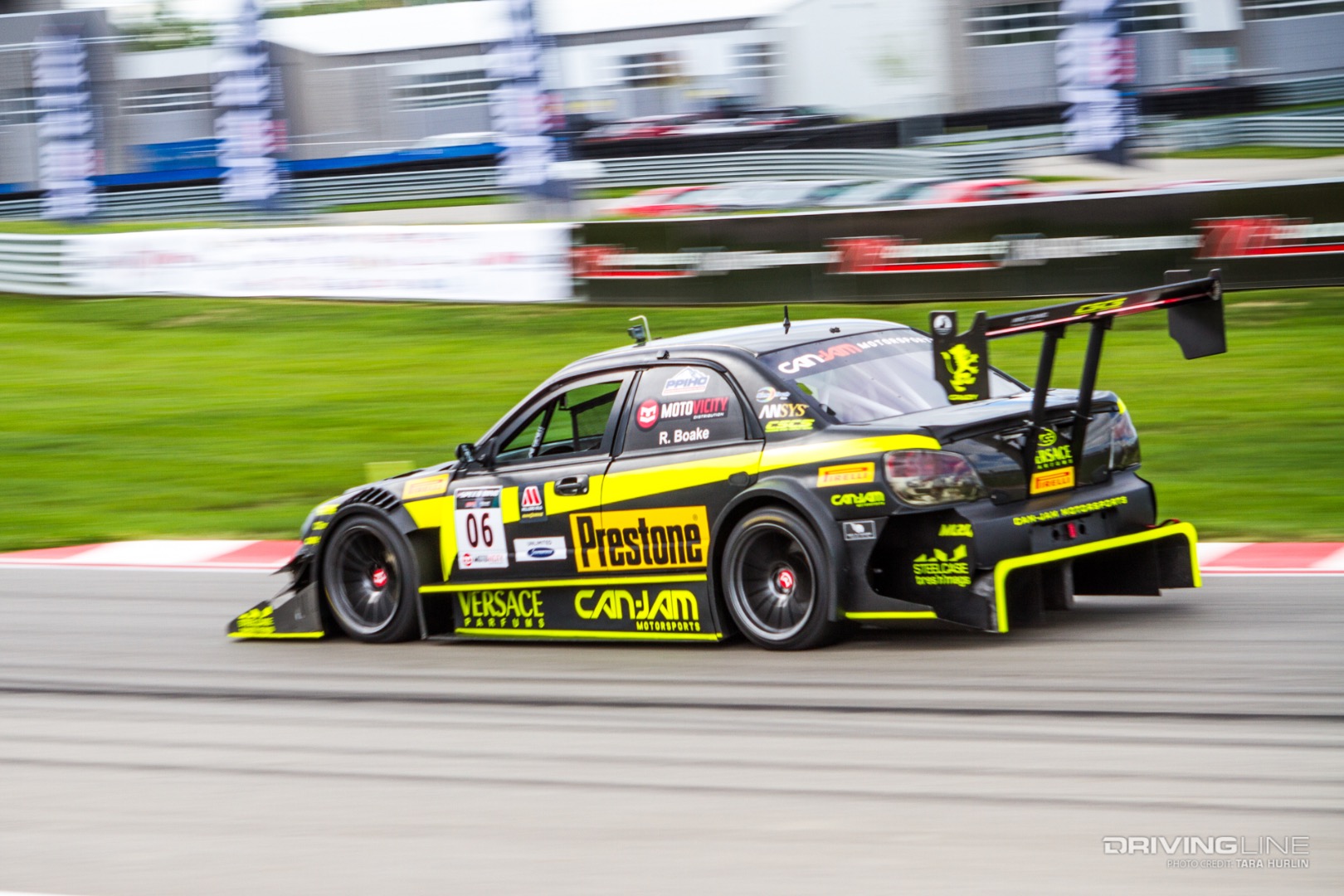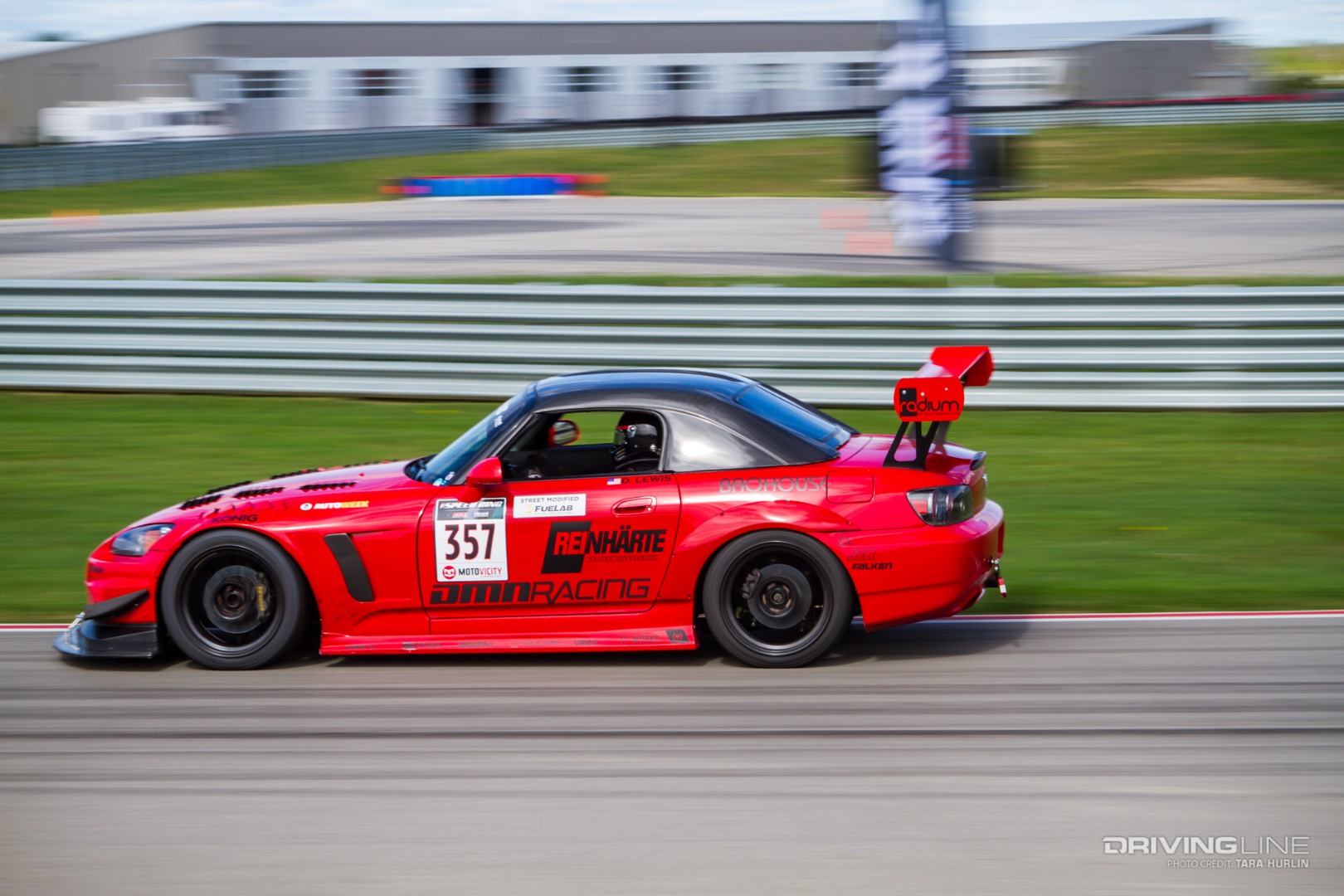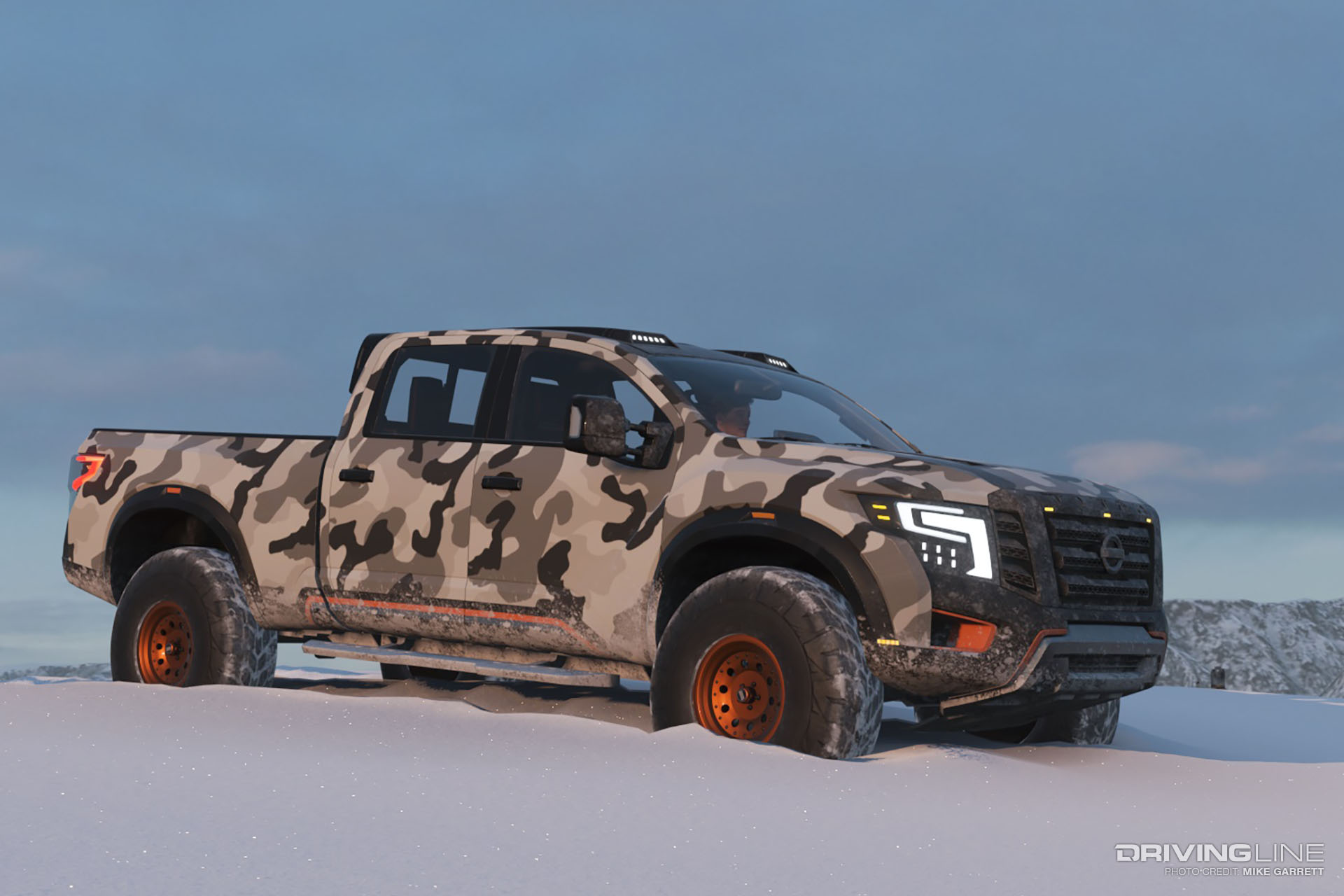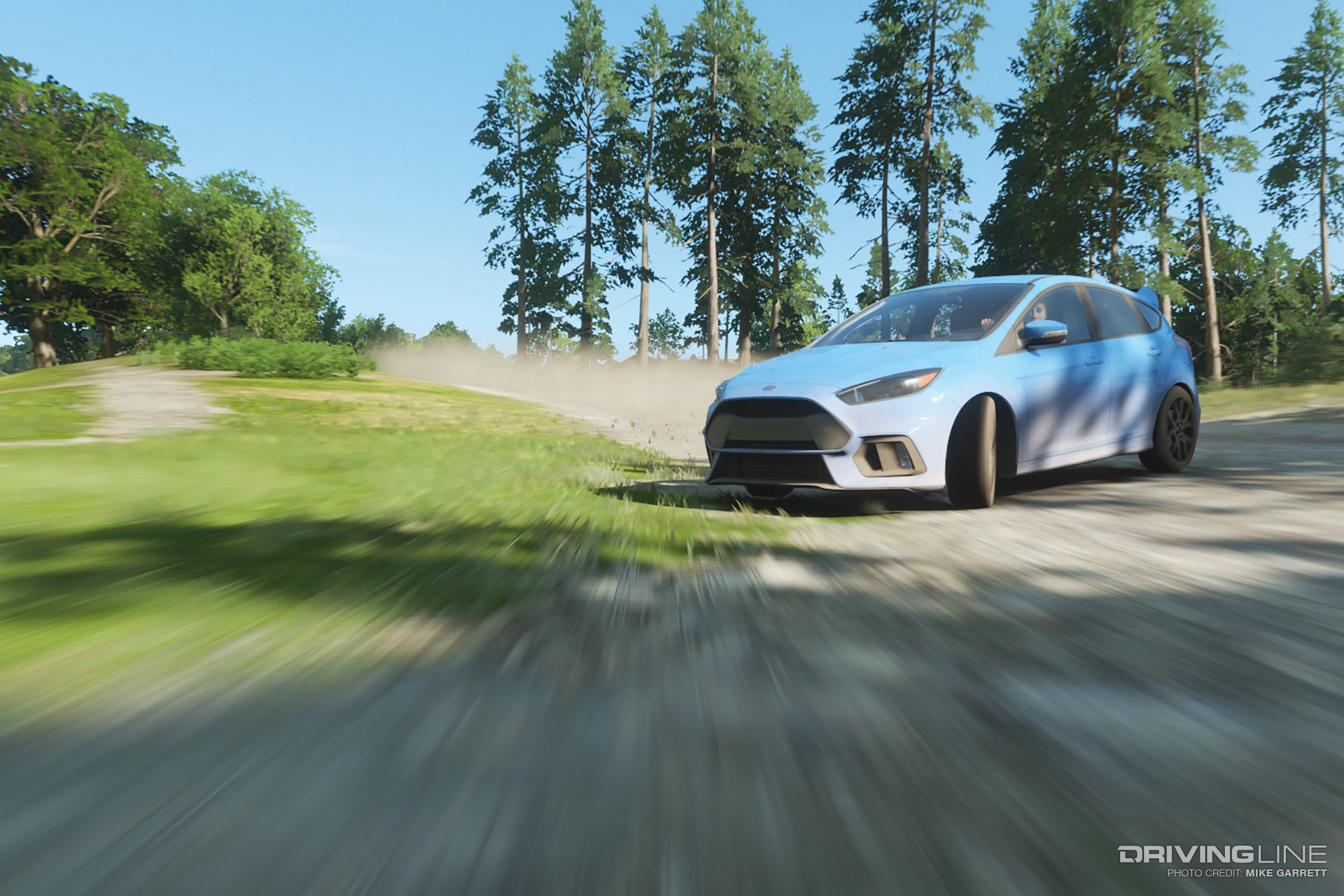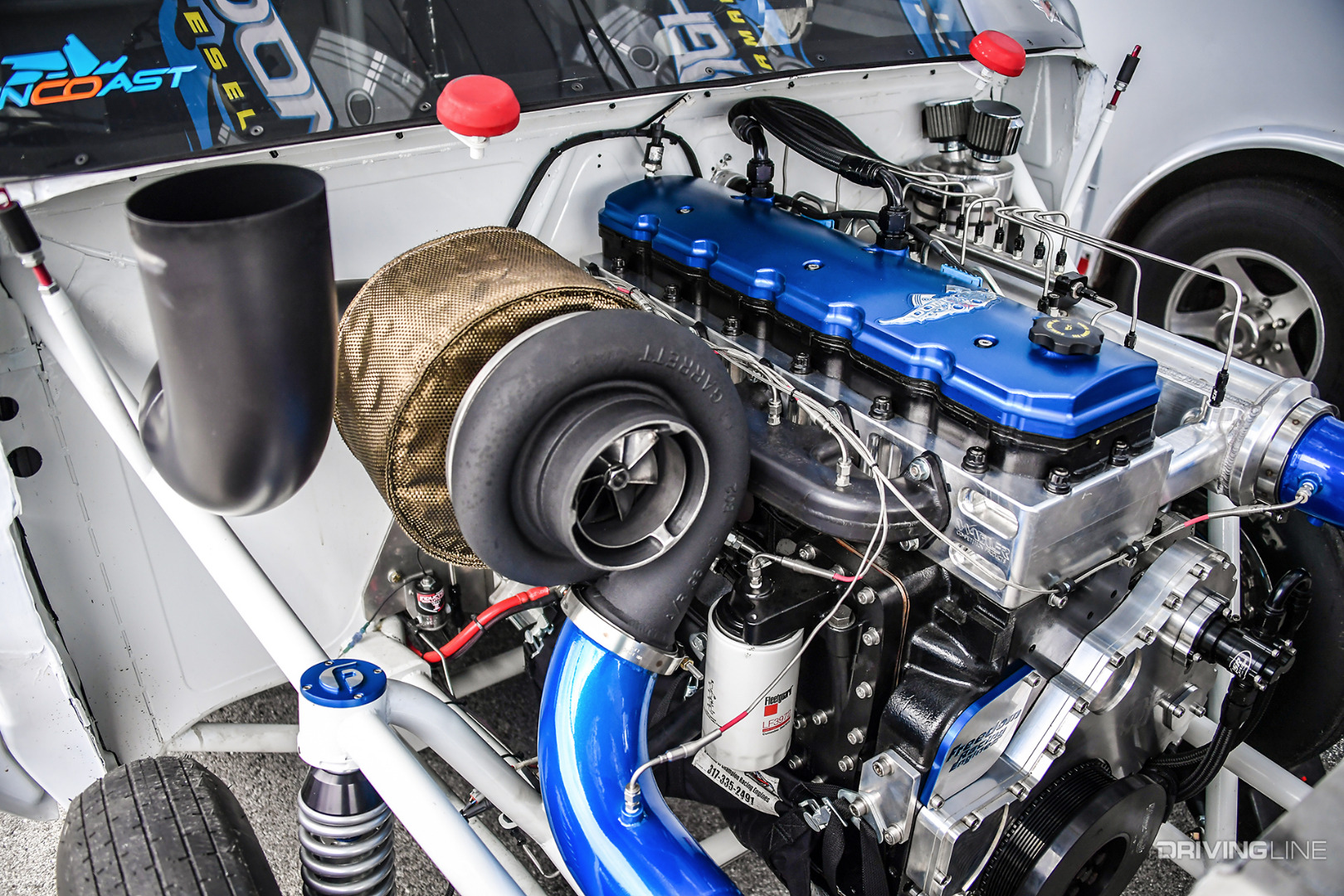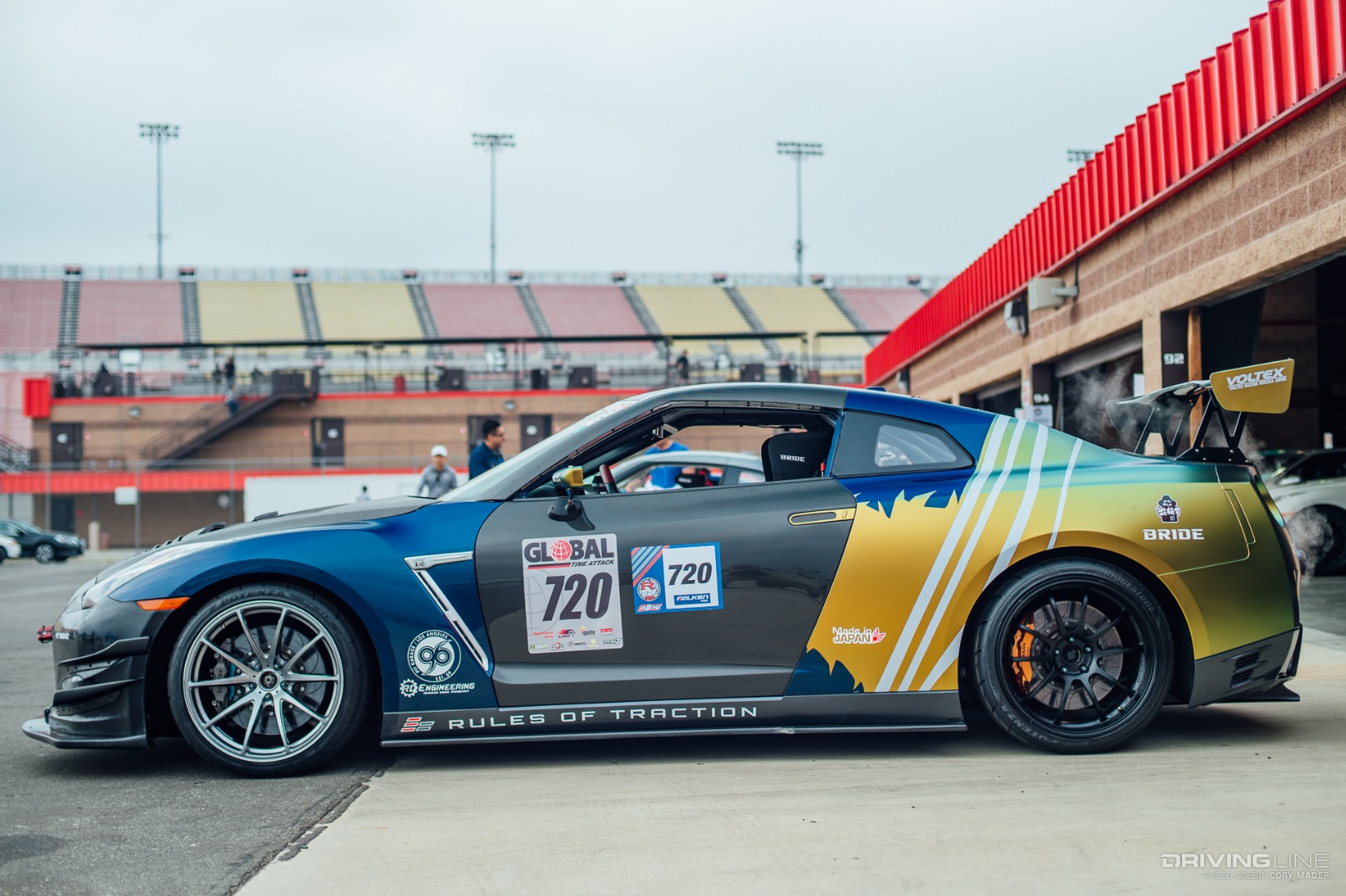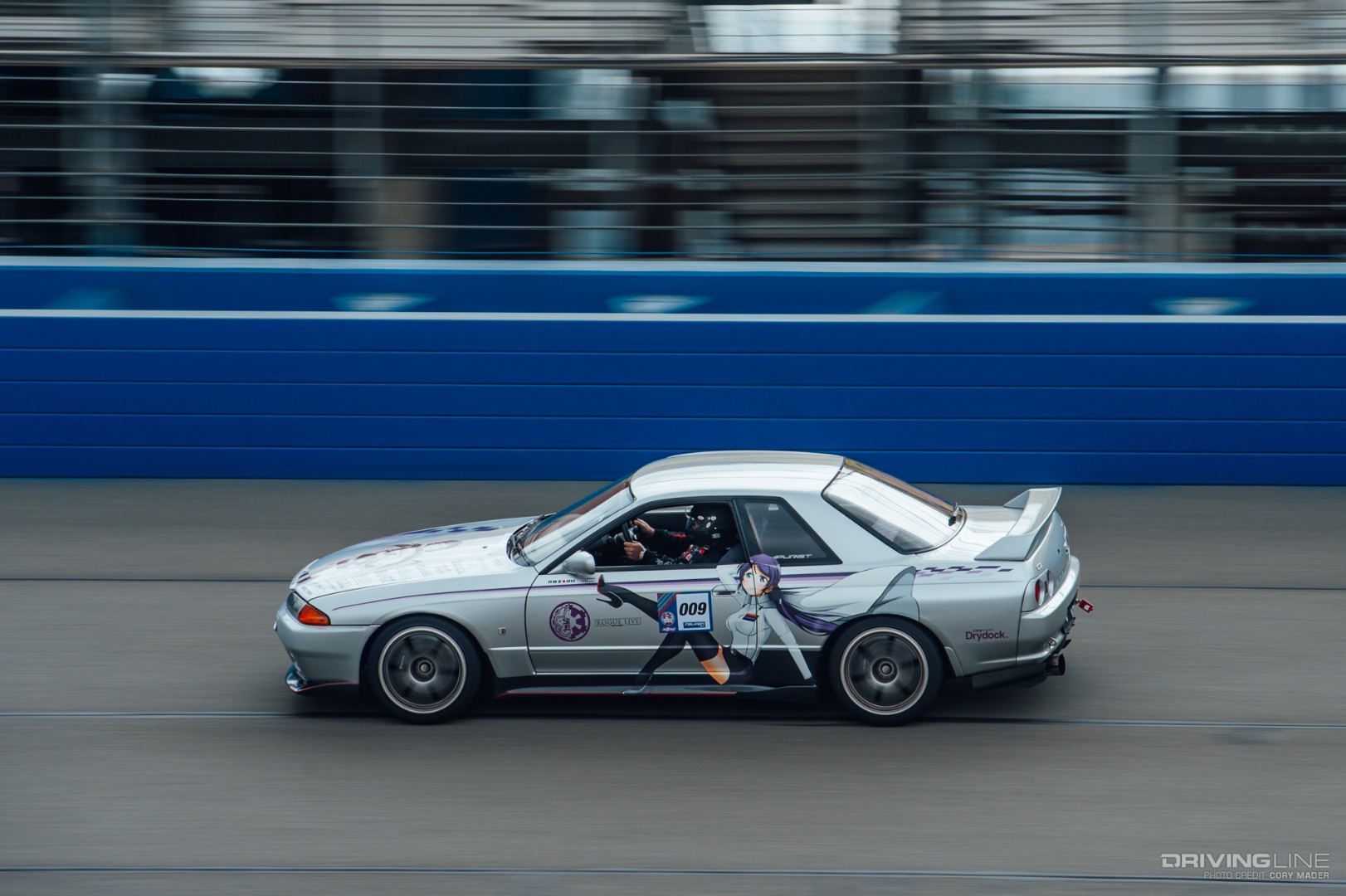Throughout our history, mankind has always been on the move. Some would say traveling is instilled in our DNA. The invention of the automobile made traveling over long distances accessible to the masses. In today’s world, passenger jets have replaced cars for long journeys, but for some, the call of an epic road trip spanning thousands of miles over many days is too loud to ignore. Combine it with a competition in precision driving, and the sport of road rally is born.
![Dave Cole's JL heading down the Dalton Highway]()
Since its inaugural run in 1984, the Alcan 5000 rally has offered a 10-day escape for automotive enthusiasts and connoisseurs of driving alike, through the most desolate and scenic regions of North America. Beginning in Kirkland, Washington, the Alcan 5000 runs north into Canada through British Columbia, into the Yukon Territory, then crosses over the international border again into Alaska, ending in Fairbanks. The rally does not take the shortest route, but leads competitors along scenic byways and through notable places of historical and cultural interest. It takes place every two years, alternating between summer and winter events.
![The Alcan 5000 route]()
A portion of the Alcan 5000 Rally is made up of mostly scenic touring, with short “regularity sections” along each day’s route. Competitors are given a route book containing detailed directions along each mile of the 5000-mile event, ensuring they know where each day’s start line begins and the exact minute they need to leave from it. These rally sections of the route are monitored by rally staff to measure the time each vehicle crosses the checkpoints. Recorded times are compared to a “perfect run,” which the event organizers time months beforehand. For every second a team arrives later or earlier than the perfect run, one point is given. Regularity sections require the navigator to read the route book to the driver in real-time, ensuring the vehicle is traveling at the precise speed, while arriving at the exact locations at the noted time. To be clear, this is not a race, and most speeds during regularity sections are below the posted limit. Ending every day, results are posted allowing teams to check their progress. The team with the least amount of points in their class at the end of the rally is named the winner.
![A Lancia Delta Integrale making its way through a regularity section]()
Wheels up to Adventure
Returning to the 2018 Alcan 5000 Rally, Nitto Tire participated both as a sponsor and competitor after having participated in both the winter and summer rallies in previous years. Competing for Nitto was Dave Cole, owner and co-founder of King of the Hammers, and Chris Corbett of Nitto Tire. Their vehicle of choice was a 2018 Jeep Wrangler Unlimited JL Rubicon, on 35x12.50R17 Ridge Grapplers, which proved to be the perfect setup for this type of rally. The route did not stick to the pavement, as many hundreds of miles along the way were on dirt roads, winding through the forests and mountains of Canada and Alaska. But the paved sections of this trip were no cakewalk either, as many of the highways were riddled with deep potholes, construction sections and gravel. As a hybrid terrain tire with a strong sidewall, the Ridge Grappler conquered every mile of the Alcan 5000 with ease and comfort, showing its true grit as a quiet and smooth all-terrain tire with the off-road traction of a more aggressive mud-terrain.
![Dave Cole's JL on Ridge Grapplers]()
Of course, the Nitto Team’s JL wasn’t the only vehicle competing in the rally on Nitto tires. Mel Wade, veteran off-road racer and owner of Off Road Evolution, brought his fully outfitted 2018 Jeep JL Rubicon as well, sporting a set of 37x13.50R17 Nitto Trail Grapplers. Mel’s son, Melvin Jr., sat in the passenger seat and navigated the course. Mel races on Trail Grapplers with his proven 4400 class Ultra4 Jeep JK, nicknamed EVO1, and prefers the robust off-road performance they offer for the kind of hardcore driving he does in his Jeeps. The Off-Road Evolution JL has an unmistakable American Flag livery, and was quite the head turner through the many towns the Alcan 5000 took him through—especially in Canada!
![Mel Wade from Off Road Evolution brought his JL on Nitto Trail Grapplers]()
As they say, good things come in threes. The third JL on the 2018 Alcan 5000 was piloted by Weston Blackie and navigated by his father, Gary Blackie. Weston, a former professional rock crawler and racer, is the owner of Trail Jeeps, a custom Jeep builder in Golden, Colorado. Weston’s builds are top notch in the Jeep world, and naturally his personal 2018 Jeep JL Rubicon is nothing short of that. Rolling on a set of 37x13.50R17 Nitto Ridge Grapplers, Weston’s Jeep is a fine example of a JL built with both comfort and off-road performance in mind.
![Weston Blackie's JL on Ridge Grapplers entering the Yukon Territory]()
The Jeep JL wasn’t the only Wrangler competing in the Alcan 5000 rally. Three other Jeep Wrangler JKs were in attendance, featuring Nitto Trail Grapplers, Ridge Grapplers, and Terra Grappler G2s, proving the Grappler family is ready to take on any kind of adventure you can throw at it. Although certainly the most capable vehicles on the Alcan 5000, the Jeep Wranglers only made up a small part of the field. Bringing variety to the Alcan 5000, the field included a JCW Edition Mini Clubman, Lancia Delta Integrale, Lexus GX460, EcoDiesel Jeep Grand Cherokee, Toyota Tundra and a fourth-gen Dodge Ram 2500 with a flatbed. The wide range of vehicles meant nobody’s Alcan 5000 experience was alike. This diverse field of vehicles had advantages and disadvantages for all teams. Despite the long distances and rough road conditions, only one car, a ‘69 Austin Mini MK2, suffered a rally-ending engine failure.
![A Triumph TR6 on the Alcan 5000]()
Twenty-six motorcyclists joined the pack as well, most of them riding dual-sport touring bikes such as KTM 950 Adventures and BMW R1200 GS-As. Where the four-wheeled teams had the comfort of heaters, windows, a roof over their heads and the advantage of a navigator riding shotgun, motorcyclists were left to the elements, reading off their own specially-designed scroll-style route books, mounted to their tank bags. This is an especially grueling trip for the bike teams, as riding through inclement weather and swarms of every insect you can imagine was a daily routine.
![The Alcan 5000 was host to 26 motorcycles as well]()
Hitting the Road
In the days before the rally, teams trickled into the Totem Lake Hotel in Kirkland, Washington. Soon, the parking lot was full of unique vehicles, from sensible daily drivers like a Ford Escape to an authentic Mustang GT350H that spent its previous years drag and road course racing. The diversity of vehicles was only matched by their respective drivers and teams, many of whom drove their vehicles near and far to reach the Alcan 5000 starting line. While many had their vehicles transported to Washington, a select few actually drove there from places as far as the East Coast.
![Gearing up for the Alcan 5000]()
Long-time Alcan 5000 chairman and head-honcho Jerry Hines ensured each participant, most of whom were going for the first time, had everything needed for a successful rally.
![Jerry Hines, leader of the Alcan 5000 rally]()
The crisp morning of day one brought thumping and buzzing sounds heard all throughout the Totem Lake Hotel. As teams scrambled to load their cars, trucks and bikes with gear, non-Alcan participant hotel guests watched with somewhat-confused expressions, eventually asking what the commotion was all about. Vehicles lined up single file, and the first vehicle took off from the valet rotunda at 0800, followed by another team every minute after. The last motorcycle left the start line, approximately one hour after the first car.
![Mel Wade was the first Jeep off the line]()
As the rally pushed farther North into the Yukon Territory over the next three days, participants got a first-hand look at historical and cultural sites like the Sign Post Forest in Watson Lake and gold-rush town of Dawson City. Dave Cole and Mel Wade’s teams even had enough time to play around in Carcross, which is home to “the world’s smallest desert.” This one-square-mile sand dune is located in the middle of the boreal forest and offers a unique off-road driving experience.
![Carcross Desert in Yukon Territory]()
Top of the World
Leaving Dawson City meant boarding a ferry that crossed the Yukon River, adjacent to the old mining town. Three by three, vehicles were loaded, crossed and unloaded until all teams made it across. The dash to the international border into Alaska was underway. Riding along a ridge for several hours, the dirt road called “Top of the World Highway” eventually led to the seasonally-open customs office at Poker Creek, offering an elk design on their passport stamp—a must-have for collectors!
![An AWD Porsche 911 on the "Top of the World" Highway in Alaska]()
The first overnight stop in Alaska was in Copper River, at the high-end Princess Lodge. As rally teams relaxed in the “year-round Christmas” themed lodge’s lobby and courtyard, enjoying the late-setting sun and epic views of snow-capped mountains, a special treat was bestowed upon those who opted to stay up late. The Aurora Borealis, or Northern Lights, made their appearance over the hotel grounds. This magnificent show of radiance was particularly strong that night, coming in waves every few minutes. Before long, everyone was awake and outside with their eyes and cameras aimed at the sky. For many, this was the first time seeing the phenomenon, and the experience was clearly on everyone’s bucket list.
![Mel Wade's JL under the Northern Lights]()
Setting off again, past glaciers and waterfalls, the rallyers passed Valdez en route to the most dangerous section of the journey.
![Worthington Glacier is one of the many glaciers you'll pass along the Alcan 5000]()
Nicknamed “The Haul Road,” due to the many semi-trucks that make the dangerous voyage, the Dalton runs alongside the Alaska Pipeline from Fairbanks, into the Arctic Circle, ending in Prudhoe Bay. The Dalton also contains the longest stretch of road in the United States without fuel, 240 miles to its northern terminus. Experts suggest anyone traveling the Dalton to bring survival gear with them, as the road can be treacherous to any kind of vehicle. With no cell signal or medical facility for hundreds of miles, an incident on the Dalton carries a very high risk.
![The three JLs, ready to tackle the Dalton Highway along the Alaskan Pipeline]()
Luckily, JLs thrive on roads like the Dalton. With a 300+ mile fuel tank range, and spare fuel cans on the back, the Jeeps left at 0600 to take on the last road north along the Alaska pipeline, and enter the Arctic Circle. After a quick stop to take a photo with the Arctic Circle sign, the pack made way for the town of Coldfoot for lunch. This is the last stop for services such as gas, food and lodging until the Dalton reaches the Arctic Ocean. Alas, this was the turning back point for the Jeeps, as time wouldn’t allow for a continued journey to Prudhoe Bay.
![A quick photo opportunity at the Arctic Circle sign]()
Ending the trip, the last day included a short regularity section, followed by a trip to the Chena Hot Springs for some sight-seeing. That night was the awards ceremony and reception, hosted at the Fountainhead Antique Auto Museum, which features iconic automobiles from the 1800s to the 1930s, a fully functional mechanic shop and vintage auto parts displays.
![A Mercury Comet Caliente crossing the Yukon River]()
The competitors were busy swapping stories from their own journeys when Alcan chairman Jerry Hines began the awards. First place overall went to Frank McKinnon, John Putnam and Peter Schneider in their Ford Escape. The first place motorcycle trophy went to Steve Alley and his KTM 990 Adventure. Rod Sorenson was awarded the “Go Farther Award” for his 830-mile trek in 18 hours up the Dalton and back, “because it was there.”
![Competitors swapping stories outside the hotel]()
The Alcan 5000 Rally offers a unique experience in competitive driving and touring the most scenic and remote wilderness in North America. This trip is notorious for shortening the bucket list of whomever braves it, and sends you home with hours of stories to tell your friends, family and coworkers. Whether you’re a veteran road rally driver with a purpose-built vehicle, or you brought your daily driver on your first ever rally event, you’re guaranteed to have the adventure of a lifetime. This wasn’t the first Alcan 5000 Rally the Nitto Tire team competed in, and it surely won’t be the last. With the 2020 Winter Alcan 5000 Rally already taking entries, it’s only a matter of time before we find ourselves heading North again.
![GT350H Shelby Mustang heading up the Alcan 5000]()
For Matt, driving the Alcan 5000 was only half the journey. He then needed to drive the Long Road Home.










